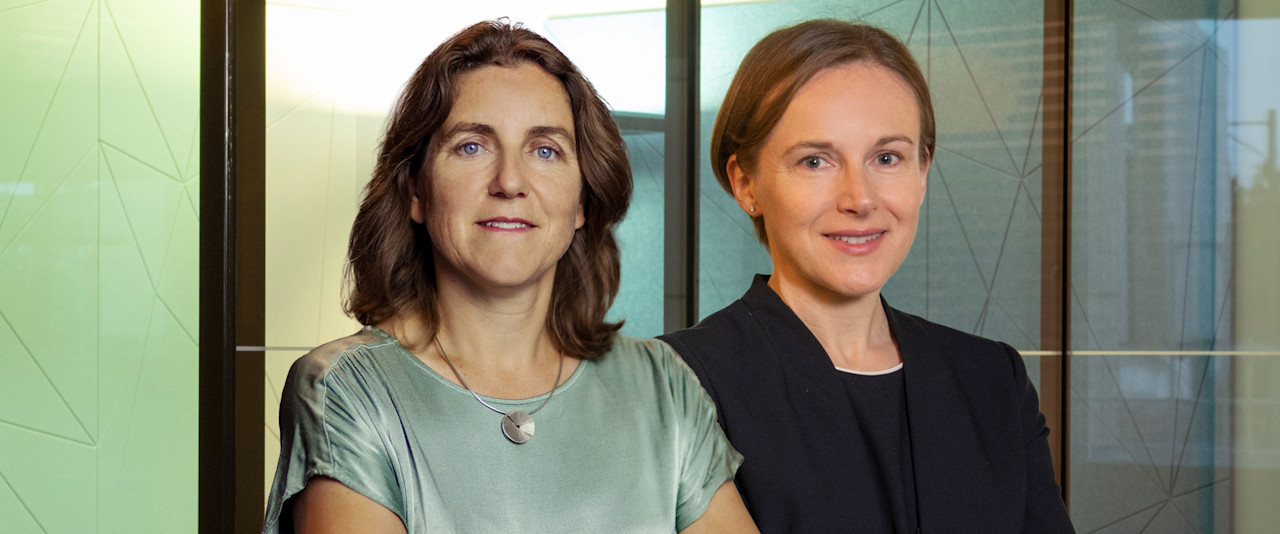


Understanding sustainability beyond the data
The drive to reach net zero emissions has placed greater emphasis on gathering reliable data – and lots of it.
Sommario
- Robeco expands growing SI library for external data sources
- Making sense of often incomplete information is key to success
- Metrics are still in flux and having a common standard would help
The lack of sufficient quantities of accurate data for emissions and other areas of sustainability such as biodiversity or resource use has led some to question whether it can ever paint a true picture of corporate activity.
It is therefore important to understand the purpose of measuring success in sustainability beyond simply number crunching, while using the data that can be obtained as a means to an end, says Robeco’s SI Data Strategist, Morgan Williams.
Robeco recently expanded its data catalogue by buying in much more risk rating and other sustainability data to complement existing internally curated data such as the Country Sustainability Ranking and SDG Score.
One area in which this kind of strengthening of data gathering capabilities is likely to prove invaluable is in trying to measure the Scope 3 emissions of companies, as investors pursue net zero carbon targets. These are emissions that occur along the value chain of a product, such as the driver of a car, rather than those of the car manufacturer (Scope 1), or the energy used to make it (Scope 2), which are fairly simple to collect.
“The real problem here is that there are not yet enough people looking at Scope 3 data, poking holes in it and asking questions of it to make it better,” says Williams, himself a new addition to the Robeco SI Center of Expertise. “This is one of the reasons why we’re now using more external data to try to plug this gap.”
“But it’s not just a case of buying in data from wherever you can find it. All data by definition is backwards looking, which won’t help us in trying to figure out whether a company is on track to meet net zero targets.”
“One solution here is to use more forward-looking projections, but this has its own problems – at the end of the day, ‘forward-looking data’ is just forecasts.”
A thought process
Making sense of the data is another challenge; how to work with vast sheets of numbers? “It's a thought process like anything else,” says Williams. “The term ‘big data’ gets thrown around quite a lot, but what we're really looking at is small to medium-sized data.”
“Then there are challenges when working with it – we still have to work out how to link everything together. It's far more complicated than you might imagine trying to bring together three providers into one big table to create a view. They often provide data using different identifiers, methodologies and terminology may not always align perfectly and each provider might apply treatments such as corporate actions in their own custom way.”
“But when you have it all together and can do some grouping, you can start to assess whether or not there are outliers. We go through a lot of the standard data exploration processes, making assessments to gain an initial sense of the larger set of information. We then dive into further details when we have a particular question that we want to answer.”
Looking for big patterns
Knowing what to look for can help answer that question. “For something like Scope 3 emissions, we first start to look at big patterns that we can see and then we might dive into a particular area like hard-to-abate sectors.”
“We will ask ourselves: how does the information look there? Are there any differences in, say, regional disclosure, within a particular group of companies, or over time? How have these differences changed? We’ll look for things of this nature.”
“We try to make use all the different tools at our disposal to make those assessments to come up with something that can answer the relevant question.”
Using enterprise value
One change in data analysis has been the move away from measuring emissions or other sustainability metrics against a company’s revenue – the so-called intensity approach. Data analysts now compare it instead to enterprise value including cash (EVIC) – a company’s stock market capitalization plus its cash and debt – the so-called ownership approach.
“Previously people were doing the best with what they had, comparing things like emissions to revenue,” says Williams. “Now we use enterprise value as the basis for our decisions because it gives a much clearer picture of our ‘ownership’ of those emissions across all types of investments, be it equities or bonds.”
“The other thing that enterprise value does is take into account what companies are doing irrespective of the business cycle. It is more reflective of the size of the firm, whereas revenue can fluctuate depending on a whole host of different factors. So, overall we think this is a is a better metric over and above revenue.”
Speaking the same language
Having a common framework would also help; an argument that lies at the core of defining sustainability itself. Efforts are now being made to try to standardize metrics or impacts in a way that will make it easier to compare emissions data.
“A good basic framework is very important as it allows people to speak the same language,” says Williams. “That doesn't mean that we need to have every single data point exactly the same from every single provider. But a meaningful standard does allows you to do comparisons and be consistent over time.”
“I think that we're getting to a point where that's starting to come to the fore. The EU is making big strides in this space, with the Taxonomy set to be a major milestone in how we define sustainable investing.”
Major breakthrough
Another breakthrough came at the COP26 climate summit with the announcement of the creation of the International Sustainability Standards Board.
“This group, part of the International Financial Reporting Standards foundation, will deliver a comprehensive global baseline of sustainability-related disclosure standards, much like what exists today with financial accounting,” says Williams.
“It is huge step in the right direction, reducing the alphabet soup of the different ESG standards into a single one that we can get behind. That way we can stop arguing about what to measure, and then actually just start capturing it and analyzing it.”
A lame excuse
The lack of data has sometimes been used by companies and investors as a reason to avoid adopting sustainability. “That’s a lame excuse for people to blame the data when saying no to sustainability,” Williams says.
“There is no perfect data, but there is enough out there that is perfectly usable. Data generally speaking can still be captured and gaps or inconsistencies can be worked through. So this should not put off any investor from adopting sustainable investing one iota.”
“By having more people look at data and accordingly with more people understanding it, and with the advent of the Sustainable Finance Disclosure Regulation (SFDR) more clearly defining the requirements for sustainability, it will become clearer about what it means for a company to be a sustainable investment.”
Aggiornati sulle ultime novità in materia di sostenibilità
Iscriviti per esplorare le ultime tendenze in materia di investimento sostenibile.
Completing a jigsaw
And the need for data is becoming greater, not less, leading Robeco to hire two more SI data scientists in the past year. “The research for which Robeco is so well known has always been an activity that requires data of some sort,” says Williams. “What has changed is the volume, frequency and breadth of data that is needed to make investment decisions.”
“What we bring to the party is the ability to handle this large volume of data and turn it into more meaningful chunks for colleagues to make use of. We help with assessing which is the best data provider for a particular type of information, and provide insights that then allow our investment teams to make the right choices. And we’ll do that in a way that uses as many of the modern techniques as possible where relevant.”
“Personally, I quite enjoy being able to take a big kind of swirling mess and turn it into something meaningful, and to be able to reproduce that process and share and help people better understand what can be a difficult subject.”
“ESG is not actually that complicated, and some people talk about it as being an alternative form of investment, but it's just doing good investing for the long term. You just need different pieces of information to complete the jigsaw.”






















